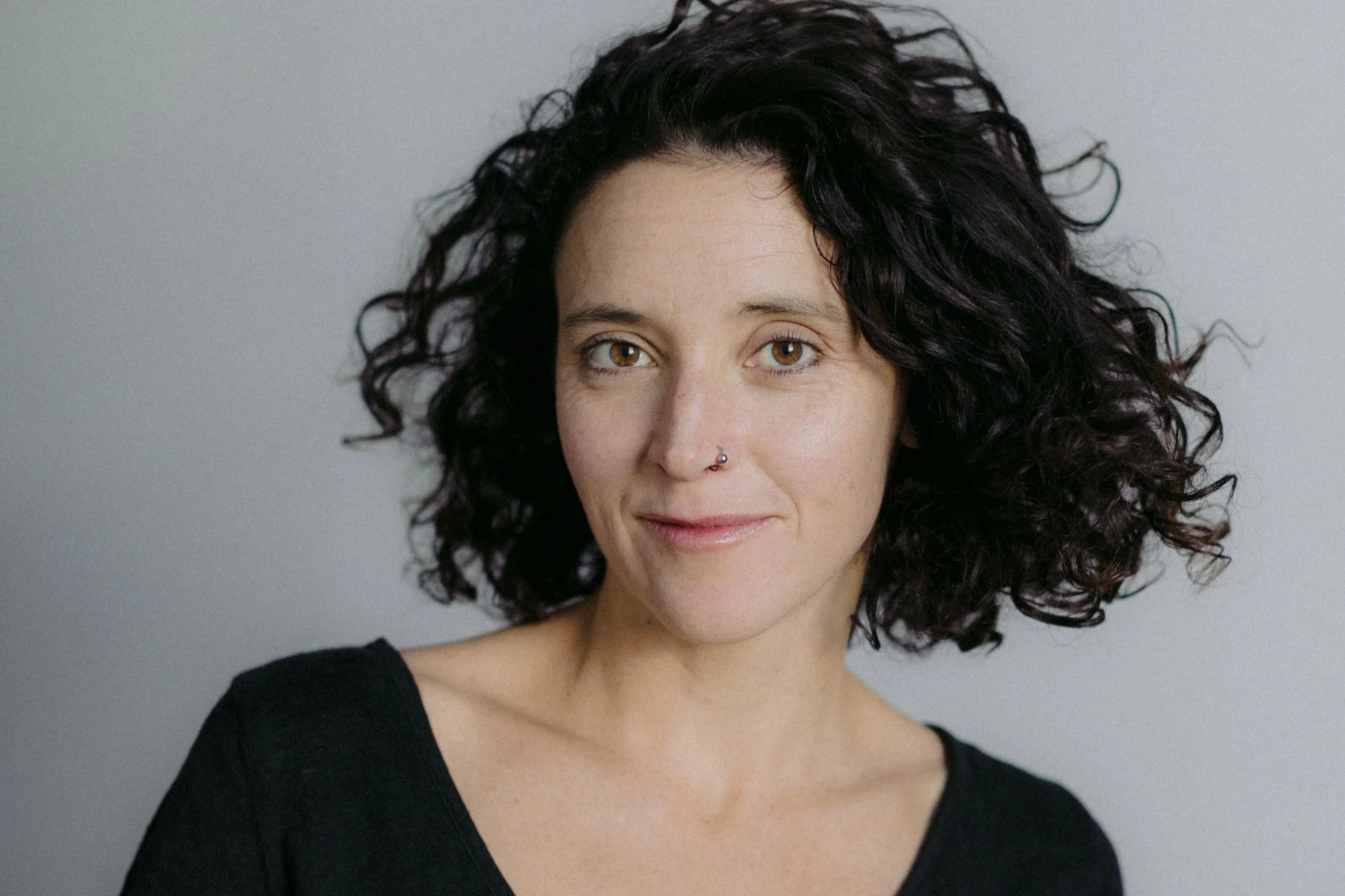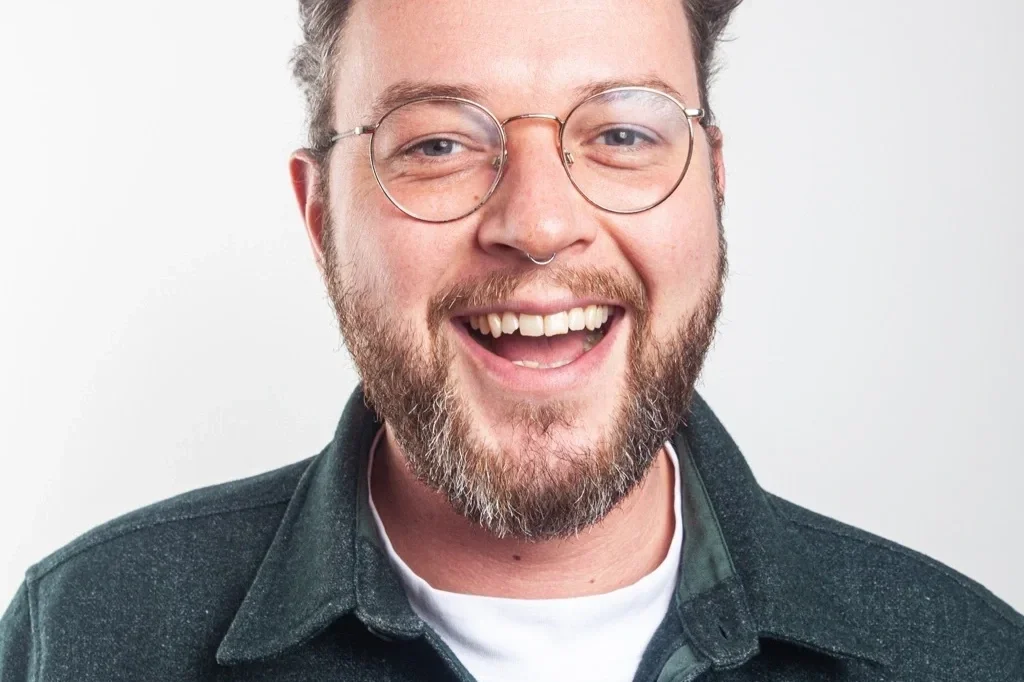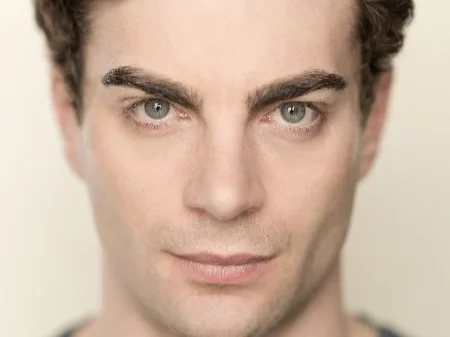Interview with Anna Seymour, The Promise
From the nationally acclaimed British theatre company Deafinitely Theatre comes a striking new world premiere inspired by the extraordinary experiences of deaf people living with dementia. The Promise is a production written by Paula Garfield and Melissa Mostyn and combines the company’s renowned style of combining British Sign Language and English into their work.
At the heart of the production is profoundly Deaf Australian born artist and performer Anna Seymour who today chats with Theatre and Tonic about her journey.
1. To begin with Anna, can you tell us a little bit about what inspired you to develop a career in the performing industry?
I’ve always loved moving my body, and being physical, but I didn’t imagine myself working in the performing industry when I was younger. I don’t come from an artistic or creative family, and performing as a career choice hasn’t really been mentioned when growing up. However, I grew up in Lismore, in Northern NSW in Australia, which had a really vibrant Deaf community; we would gather every Friday evening for theatre nights which gave me my first taste of creating and performing. I remember the Australian Theatre of the Deaf visiting Lismore once a year and that was my favourite occasion of the year. I had my big epiphany when I was about 20 years old and I saw Bangarra (an indigenous contemporary dance company based in Sydney) perform and I immediately knew dancing and performing was what I wanted to do. The pull was so strong, and I moved to Melbourne to train and build my career as a performing artist.
2. You are a profoundly Deaf dance artist and performer which I am sure has presented many barriers. Can you remember a time which was particularly difficult (that you are comfortable to share with us)?
I was living in Melbourne, and I really wanted to do pro dance classes and workshops to develop my skills as a dancer but in those days, there was no funding for sign language interpreters. Classes weren’t accessible or inclusive, there just wasn’t any support for me to do classes. Deaf dancers were unheard of. I was extremely frustrated that I couldn’t access training. I was despairing and that was a difficult time. I had a boyfriend at the time and one day he said to me “You need to go to a pro class Anna. I will go with you.” I was so scared and so nervous, but I did the class. We must have looked like an odd couple! He came with me a few more times, then he said to me “You are on your own now” and I continued to go to classes, without interpreters and looking back I don’t know how I did it. I remember one particular class where we were instructed to close our eyes while improvising. Closing my eyes as a Deaf person is scary, but I decided to give it a go. After a while, I opened my eyes and saw that I was the only one still moving, the others had stopped and were talking. They weren’t sure how to let me know. I remember feeling very embarrassed and angry. That was a while ago, that wouldn’t happen today!
3. Being profoundly Deaf, can you explain to our readers how you have developed your movement style?
I trained in contemporary dance, and I would describe my movement style as fluid, energetic and delicate. A choreographer I worked with described my style as both fierce and vulnerable. A dancer friend described me as a hungry dancer. That really resonates with me as I felt like I missed out on so much dance training when I was younger, and I was so hungry for more training, and to feed my body with technique, information, and knowledge. I’ve often been told by my performing colleagues and audience members that my eyes stand out. I think that’s because I rely heavily on visual information and cues.
4. Do you think the dance / theatre industry is accessible for profoundly Deaf performers like yourself? If not, why do you think in 2024 it isn't?
That’s a big question. It’s a constant work in process, and there is so much more to learn and improve. The mainstream dance and theatre industry traditionally has not been accessible for Deaf performers for so many reasons. Working methods, rehearsal structures, performing/touring structures have been developed for non-disabled and hearing people. Deaf and disabled artists have had to work really hard to break into the industry and to bend backwards to keep up with those structures and paces of working. Some projects have been more accessible than others, it depends on the people and the resources available. It’s improving, but sometimes it takes a lot of emotional labour to fight for access needs.
James Boyle (Jake) and Anna Seymour (Rita) in The Promise. Photo by Becky Bailey.5. You are also a dancer with Candoco Dance Company, why are companies like this fundamental for Deaf and disabled dancers?
Candoco Dance Company was established just over 30 years ago and they wanted to unapologetically present disabled and non-disabled dancers as professionals and equals within the dance sector. They wanted to see disabled dancers in mainstream and professional contexts on the main stages and working with international choreographers. Candoco has been instrumental in changing public perception of disabled dancers. Candoco has been an amazing professional opportunity for many disabled dancers (there has only been two Deaf dancers, including myself, in the company to date). Candoco was very exciting for me as an emerging dance artist to see what was possible. I auditioned for Candoco in the beginning of 2020 and was absolutely thrilled when I was offered a contract with the company. I joined during COVID so it was a very rocky start but eventually we were able to perform and tour. Candoco has been so significant for my performing career – I’m learning so much and thriving in London. It has deepened my craft and opened up so many doors.
Read more: Our review of The Promise, Deafinitely Theatre
6. You are now performing in the world premiere of Deafinitely Theatre’s The Promise, what motivated you to want to work on this piece?
I have done some theatre and TV acting in Melbourne, Australia and I loved it. It touched something inside me, it’s hard to explain, and I knew I wanted to do some acting. But dance was dominant in my career, and I was focused on that and my work with Candoco. In August 2023, I was invited to perform in the Vagina Monologues with Deafinitely Theatre and the acting spark was re-lit. The director of Deafinitely Theatre, Paula Garfield, invited me to audition for The Promise. I read the script, and I was immediately intrigued. I was ready for a new challenge, to see how I could use my dancing and performing experience in a theatre play.
7. For those who don’t know a lot about The Promise, can you tell us a little bit about the show itself?
The Promise follows the life of a Deaf woman, Rita, who was a passionate Deaf teacher of the Deaf and advocate for Deaf education and rights, as her health deteriorates with dementia and how it affects her and her relationships with her family. The play goes backwards and forwards in time, back to 1980s England and to the present day as Rita and her family struggle with her deteriorating health and finding the appropriate and accessible care that Rita needs. There’s estrangement, miscommunication, but also a lot of love and tenderness.
8. Did you have a lot of input into how this piece has been developed?
I wasn’t involved in the development and writing of the script or the first research and development. I came into the process later, but we were given a lot of space and opportunities to improvise with the script material in rehearsals which was really nice. We had many conversations in rehearsals about our characters. A lot of analysis, asking questions and research.
9. Have you drawn on any of your personal experiences in creating Rita’s character and has this resulted in quite an emotional journey on the show?
My grandfather had dementia, but he passed away before his dementia became advanced. I remember the things he said and did, so I have incorporated that into my character. My grandmother didn’t have dementia, but she had to go into aged care which she resisted for a long time. There’s a time where my character goes into care, and I get quite emotional during those scenes as I’m feeling my grandmother’s grief at losing her independence and identity. I think a lot of people in the audience will relate to that.
Playing Rita has also brought back memories of my own journey trying to navigate the world as a Deaf woman, trying to understand my Deaf identity, where I belong, and my own despair at the state of Deaf education and the care system for Deaf people.
10. For those who haven’t booked their tickets, why should they see The Promise during its world premiere?
I think it’s a play where everyone will relate to in different ways. It shows complex family dynamics where there is miscommunication and misunderstanding. Dementia is increasing and most people know someone living with dementia and most of us have or will need to take on caring responsibilities. It’s a bilingual play, delivered in BSL, spoken English and captions which means Deaf and hearing people will be able to access it. Some Deaf people/BSL users may appreciate the use of 1980s BSL dialects and see how dementia affects the quality of signing. It’s a very complex play, and while it’s quite serious and sad, it’s also very human and there’s a lot of tenderness, lightness and humour in it. We are a cast of 3 Deaf actors and a hearing native BSL user actor and our combined experiences and skills make a really strong team. It’s a very powerful play, and while it might not always be comfortable to watch, I think it will make people think.
Catch The Promise on a limited UK tour until 11 May 2024.











